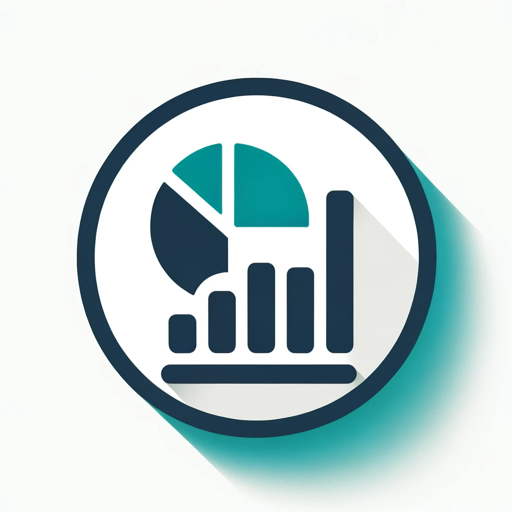Accounts - Profit and Loss-profit and loss analysis
AI-powered financial insights tool
Explain profit and loss statements
How to calculate net income?
Differences between revenue and profit?
Help with understanding my financial statement
Related Tools
Load More
Accounting GPT
Your accounting expert.
Accounting
Aid in university-level accounting with explanations and problem-solving guidance.

Accounting Solver AI
Solve any financial accounting problems. Your online accountant assistant.

Financial Report Expert
I provide U.S. and select global public companies' financial reports, making them understandable for everyone.

Financial Accounting GPT
Expert in Financial Accounting

Accounting Ace
Expert in IFRS and US GAAP for finance professionals
20.0 / 5 (200 votes)
Introduction to Accounts - Profit and Loss
Accounts - Profit and Loss is designed to assist individuals and businesses in managing and understanding their financial accounts, specifically focusing on the creation, analysis, and interpretation of profit and loss (P&L) statements. This service is aimed at breaking down complex financial concepts into simpler terms, making them accessible to users with varying levels of financial literacy. For example, a small business owner can use Accounts - Profit and Loss to track their revenue and expenses, ensuring they understand their net income and financial health. Another scenario could be a hospital administrator who needs to analyze departmental costs and revenues to identify areas for financial improvement.

Main Functions of Accounts - Profit and Loss
Creation of Profit and Loss Statements
Example
Assisting a startup in creating their first P&L statement to present to investors.
Scenario
A new business owner wants to attract investors but needs a clear understanding of their financial performance. Accounts - Profit and Loss guides them through listing all revenues and expenses, calculating the net income, and formatting the P&L statement professionally.
Analysis of Financial Data
Example
Helping a restaurant owner identify which menu items are most profitable.
Scenario
A restaurant owner uses Accounts - Profit and Loss to analyze sales data and costs associated with each menu item. This analysis helps them understand which items contribute most to their profits, allowing them to adjust their menu and pricing strategy accordingly.
Cost Management
Example
A hospital administrator identifying departments with excessive costs.
Scenario
A hospital administrator uses Accounts - Profit and Loss to analyze departmental expenses. By comparing costs across departments, they can identify areas where expenses are higher than average and investigate the reasons, potentially leading to cost-saving measures.
Ideal Users of Accounts - Profit and Loss
Small Business Owners
Small business owners benefit from using Accounts - Profit and Loss as it helps them understand and manage their financial health. They can create detailed P&L statements, analyze their revenue streams and expenses, and make informed decisions to improve profitability.
Hospital Administrators
Hospital administrators can use Accounts - Profit and Loss to manage and analyze the financial aspects of hospital operations. By understanding departmental costs and revenues, they can implement cost-saving measures and ensure the financial stability of the institution.

Guidelines for Using Accounts - Profit and Loss
1
Visit aichatonline.org for a free trial without login, also no need for ChatGPT Plus.
2
Familiarize yourself with basic accounting concepts such as revenue, costs, and net income.
3
Prepare your financial data, ensuring it is organized into categories like sales, expenses, and profits.
4
Use the tool to input your data, following the on-screen instructions for entering revenue and expenses.
5
Analyze the generated profit and loss statements, focusing on key insights such as profit margins and cost breakdowns to make informed financial decisions.
Try other advanced and practical GPTs
Italian Link
AI-driven translation for business communication

ASO Knowledge Base
AI-powered ASO insights for better app visibility

UK Law
AI-powered legal insights for the UK.

Ahrefs Analyst
AI-powered insights for smarter SEO.

Analyst
AI-powered solutions for data and code

Forex Analyst
AI-powered forex trading insights

画像解析クリエイター
AI-powered image analysis and recreation.

Income Tax Expert STRITStax.com
AI-powered tax filing and advisory tool

Network Mentor
AI-powered guidance for networking professionals.

Network Navigator
AI-Powered Network Configuration Guide

Big Price Moves Explained
AI-powered insights into stock price movements.

BettingPros AI - Sports Betting
AI-Powered Sports Betting Insights and Odds

- Analysis
- Budgeting
- Planning
- Forecasting
- Tracking
Common Questions about Accounts - Profit and Loss
What is the primary function of Accounts - Profit and Loss?
The primary function is to help users create, understand, and analyze profit and loss statements, which summarize the revenues, costs, and expenses incurred during a specific period.
Can I use this tool without prior accounting knowledge?
Yes, the tool is designed to be user-friendly and accessible for individuals with varying levels of financial literacy. It simplifies complex concepts and guides users through the process step-by-step.
What kind of data do I need to use this tool effectively?
You need basic financial data such as sales revenue, cost of goods sold, operating expenses, and any other relevant income or expenses. Properly categorized and organized data will yield the best results.
How can this tool help in financial decision-making?
By generating detailed profit and loss statements, the tool provides insights into profit margins, expense ratios, and overall financial health, enabling users to make informed decisions about budgeting, investments, and cost management.
Is this tool suitable for both personal and business finance management?
Absolutely. It can be used for personal financial planning as well as for managing the finances of small to medium-sized businesses, providing valuable insights in both scenarios.